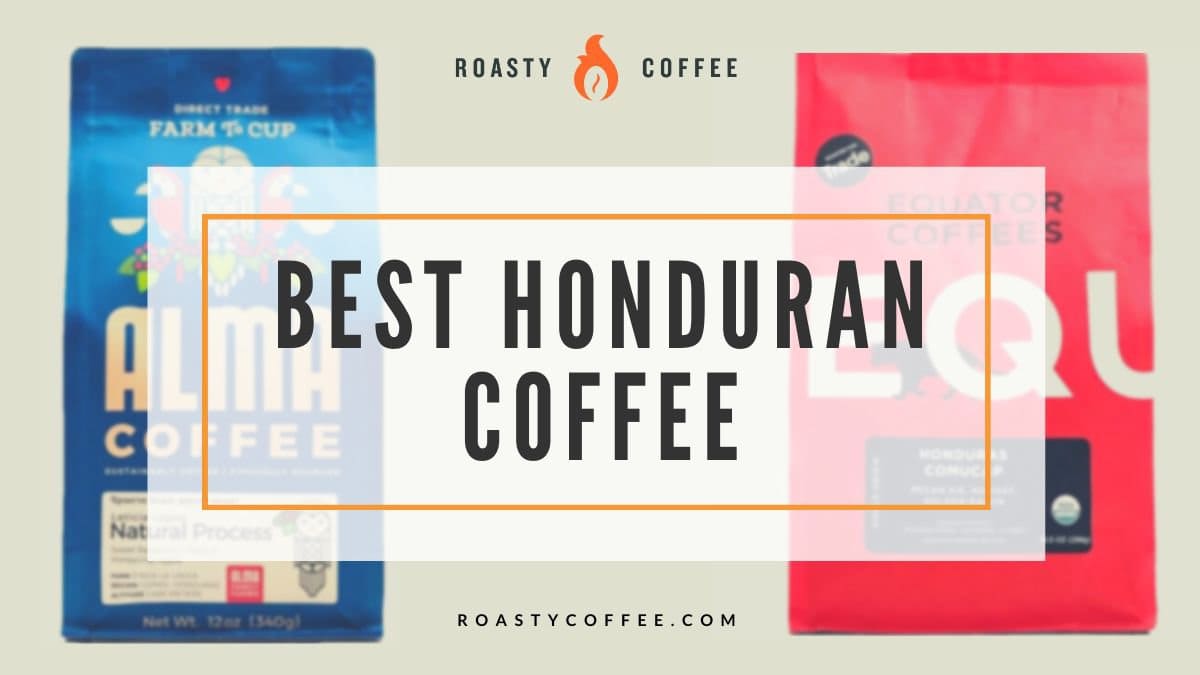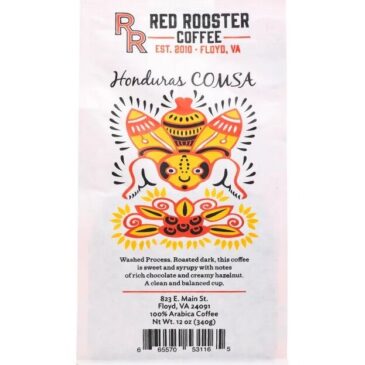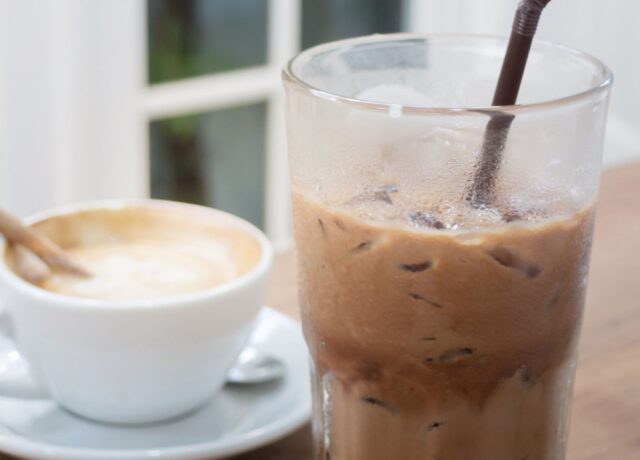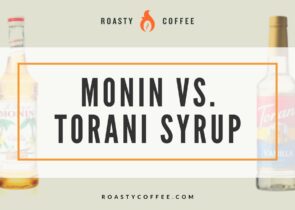One of the great things about coffee is the ability to taste different beans from different regions and therefore experience a little something from different cultures. That’s why we love trying new coffee from new places!
Not only that, but the coffee farming business is one that massively affects families in those regions, especially in Honduras, where a majority of their coffee is fair trade.
Honduras is a country in Central America, nestled pretty cozily between Nicaragua, El Salvador, and Guatemala. Until recently, Honduran coffee was unremarkable. The country relied on sending its coffee over to Guatemala to sell due to a lack of infrastructure to sell it themselves.
But, in just a few short years, Honduran coffee has gone from being unremarkable to undeniably fantastic and is now known all over the world. Honduras is now proving to be genuine competition for the other top-producing countries.
At a Glance: Honduran Coffees

Want to know how? Of course, you do — it’s all very fascinating stuff. Keep reading to get the lowdown on Honduran coffee, plus get a few product recommendations, too!
Quick Summary: Honduran Coffees
 | Our Top Pick Alma Natural Process |
| Check Price → |
 | Red Rooster Honduras COMSA |
| Check Price → |
 | Methodical Honduras - Santa Lucia Family |
| Check Price → |
 | HONDURAN EL JAGUAR COFFEE |
| Check on Amazon → |
 | HONDURAN MARCALA COFFEE |
| Check on Amazon → |
 | Metric Alma Pineda |
| Check Price → |
 | ReAnimator Honduras Finca El Jutal |
| Check Price → |
 | Equator Honduras Comucap Fair Trade Organic |
| Check Price → |
Honduran History
Honduras isn’t a stranger to coffee production, as coffee has historically been one of the country’s leading exports alongside bananas, shrimp, apparel, and cigars. But, until the turn of the millennium, coffee production was aimed at the commercial market. As a result, Honduras was seen as an exporter of low-quality coffee rather than specialty coffee, unlike its Central American neighbors.
The absence of specialty coffee-producing experience combined with Honduras’ infrastructure and a lack of quality control meant that potential buyers weren’t buying beans from the country’s growing regions.
In addition, around 80 percent of the country’s agriculture was destroyed by Hurricane Mitch in 1998. Many Honduran farmers felt they were wasting their time marketing their coffee since they weren’t seeing any financial benefit, so they continued to smuggle it into Guatemala for a higher profit instead.
Even with the odds stacked pretty heavily against it, Honduran coffee was able to fight back. In the late 1990s and early 2000s, the government implemented a tax on coffee exports, which helped direct essential funding back into coffee-growing infrastructure. Specifically, this tax helped fund roads within remote coffee-growing regions.
As you can imagine, this provided many farmers with a financial incentive to continue growing Honduran coffee in the hopes that they would be able to live a more comfortable and stable life. Slowly but surely, Honduras began turning its coffee production around.
How It’s Grown
Before getting to our product recommendations, we want you to understand the Honduran coffee experience from start to finish and how exactly those green coffee beans make their way into your cup.
Who Puts in All the Hard Work?
After a much-needed revitalization from the Honduran government, more than 100,000 Honduran families are involved in the coffee farming process. That means that family labor plays a huge role in how coffee beans from this country are produced. This is changing, however.
Like in Zimbabwe, the average age of Honduran coffee growers has decreased, and these people are generally ten years younger than they were a decade ago. The country’s younger generations have taken an interest in producing high-quality coffee beans because more and more Honduran joe is fair trade nowadays, which means there’s a higher potential for them to make a good living.
The incentives to coffee growers don’t stop there, though. The IHCAFE (a collaboration between the Government of the Republic and the Honduran Coffee Institute) has promoted Honduran coffee farmers’ economic profitability by offering them technical assistance and training, establishing novel pest-management systems, providing low-interest loans to coffee producers for equipment purchases, and providing comprehensive training for coffee cuppers through a national cupping school.
Honduran Coffee Regions: Where Is It Grown?
Honduran coffee is primarily grown in the west of Honduras, where the country borders Guatemala and El Salvador. Similar to Ghana, Honduras has six well-defined coffee-growing regions. The beloved coffee crops from each area are grown at varying elevations, have different harvest seasons and soil, and boast distinct flavor profiles.
If you’re among the coffee connoisseurs who like to know as much as possible about where their beans come from, you’ll appreciate this quick rundown of the country’s growing regions. And if you’re not, well, at the very least, you’ll have some interesting information to spout when you want to impress other coffee buffs.
- Agalta: This region, which is closer inland, ranges from 1,100 to 1,400 meters in altitude and harvests fresh coffee from December to March. Agalta-grown joe is sweet with a chocolatey caramel aroma and tropical fruity flavors.
- Comayagua: A remote central region, Comayagua has coffee plants that grow at 1,000 to 1,500 meters, and their fruit will be lightly acidic with a hint of citrus. Coffee harvesting occurs here between December and March.
- Marcala-Montecillos: A southern region near the border of Salvador, Marcal-Montecillos has fruity and sweet coffee that grows at 1,200 to 1,600 meters and is harvested from December to April. The beans have a sweeter flavor and have tasting notes of orange and peach.
- Opalaca: Opalaca coffee trees grow at an altitude of 1,100 to 1,500 meters, and you’ll find Honduran farmers harvesting fruity, berry-flavored beans with a strong aroma and slight acidity between November and February. Some of the coffee farmers in this region have even been awarded for their crops.
- Copan: In a region that’s near the Guatemalan border, Copan coffee is ready for harvesting between November and March, and coffee plants here sit at an altitude of 1,000 to 1,500 meters. These beans boast a caramel and chocolate flavor.
- El Paraiso: Coffee fruit from El Paraiso, which is near the Nicaraguan border, grows at an altitude of 950 to 1950 meters. These beans are sweet with hints of jasmine, green apple, peaches, and blueberries and are harvested in the winter, from December to March.
That’s an extensive flavor range for such an underappreciated coffee. Does anyone else suddenly want to take a trip to Honduras just for a cup of coffee? We sure do!
What Kinds of Beans Are Grown?
Several varieties of premium coffee are grown in Honduras, including Caturra, Catuai, Pacas, Bourbon, and Typica. You probably recognize one or two of these names — they’re common arabica varieties.
Honduran Coffee Bean Grading System
Beans sourced from Honduran coffee plantations are graded according to the elevation at which they’re grown. The grading system is split into three different categories:
- Strictly High Grown: the coffee was grown at over 4,400 feet above sea level.
- High Grown: the coffee was grown between 3,900 and 4,400 feet above sea level.
- Central Standard: the coffee was grown below 3,900 feet above sea level.
How Is Honduran Coffee Processed?
The wet-processing method, which requires very specific equipment and a lot of water, is most commonly used to process Honduran coffee beans.
Once the farmers have picked the coffee cherries, they immerse them in water. The good cherries will sink to the bottom of the vat, while the bad or unripe ones rise to the top. Then, the cherries’ skin is removed, usually by pressing the fruit against a screen.
This process is very efficient when dealing with large batches of coffee and is the most common sorting method used in Honduras.
Unfortunately, though, there are adverse side effects that come along with wet processing. The sugar from the coffee cherries often ends up in the water and begins fermenting, becoming acetic acid. Then, that acid occasionally finds its way back into the local waterways, where it’s then consumed.
According to the Speciality Coffee Association of America (SCAA), the amount of pollution in the wastewater due to wet-processing coffee cherries can be 30 to 40 times greater than that found in urban sewage.
Fortunately, measures are being taken to reuse this wastewater and the coffee cherries that producers would otherwise throw away. After all, a greener coffee world is a better coffee world!
What Does Honduran Coffee Taste Like?
Honduran coffee has a wide range of flavor profiles and tasting notes, especially if you favor sweet and fruity coffee, or even bright and acidic.
Answering the question “what does Honduran coffee taste like” can be difficult, because it really depends on the region and climate that the beans come from. These factors are important when it comes to the taste of the coffee that is produced.
To put it simply, Honduran Coffee has an intense aroma, notes of chocolate, fruity tasting notes, a honey sweetness, balanced, and acidic.
Roasty Rankings: Our Picks for Best Honduran Coffee
We always try to find where the best-tasting coffees come from and what flavors their country of origin offers. As we mentioned earlier, Honduran coffee flavor varies depending on the region from which it came, but generally, it’s packed with chocolate-tasting notes and has a rich, intense aroma. And as a bonus, it’s usually low-acid, too!
At the time of writing, Honduran coffee isn’t as popular as, say, Colombian coffee. But java production in Honduras is growing fast, and we’re sure it won’t be long before we see Honduran coffee bags on pretty much every shelf.
Until then, though, the best Honduran coffee is worth searching for. And luckily for you, we’ve already done the searching, so you don’t have to! We hope our suggestions give you an idea of just how good Honduran coffee is.
Alma Natural Process: Funky & Fruity, Light Roast

Alma Natural Process
Jammy and complex, with strawberry sweetness that refuses to quit. We’re loving its hints of rose and nuanced pineapple acidity.
This light-medium roast from Alma is described as a funky and fruity bean. Alma (which means soul in Spanish) is a roaster located in Canton, GA that sources its coffee directly from its family farms in Honduras.
The Natural Process coffee is one that has a strawberry jam sweetness, as well as rose and pineapple notes. The beans are natural/dry processed, come from the sub-region of Copan, and are grown at an elevation of 1,400 meters. The producer of the beans, Leticia Lopez Hutchins, is a coffee farmer and owner of her farm in Honduras.
Red Rooster Honduras COMSA: Chocolatey & Sweet, Medium Roast

Red Rooster Honduras COMSA
This bold, sweet cup, produced by a women’s co-op, offers up a comforting walnutty sweetness among notes of smooth dark chocolate.
A medium roast from Red Rooster, a roaster located in Floyd, VA, this coffee is described as being chocolatey and sweet. The tasting notes include nuts, milk chocolate, and brown sugar.
The Honduras COMSA is washed and processed, comes from the sub-region of Marcala, and is grown at an elevation of 1,550-1,700 meters. The producer, Mujale Association, is an indigenous Lenca women’s cooperative.
Methodical Honduras – Santa Lucia Family: Chocolatey & Sweet, Medium Roast

Methodical Honduras - Santa Lucia Family
Plenty of nutty sweetness and rich dark chocolate notes are complemented by a host of zesty orange aromatics.
This next medium roast is from Methodical, a roaster located in Greenville, SC. It’s described as being chocolatey and sweet, with notes of milk chocolate, nut, and citrus.
Honduras – Santa Lucia Family is washed processed, comes from the sub-region of Tres Piños, Comayagua, and is grown at an elevation of 1,200-1,650. The producer is Raul Rodriguez, and the coffee is planted in Montaña de La Choca, where the high altitude and rich soil ensure a high-quality bean.
Clean Coffee Co. Honduran El Jaguar Coffee
Clean Coffee Co.’s Honduran El Jaguar joe comes in handy for the more health-conscious coffee drinker. This low-acid coffee makes for smooth sipping and digesting and is free of agrichemicals and over 150 different toxins. Plus, it’s packed with chlorogenic acid, known for reducing heart disease, various types of cancer, and Parkinson’s disease.
The Honduran coffee beans are hand-picked, hand-washed, and sun-dried before they’re packaged and delivered to your door. Once the dark roast joe makes it to you, pull out your French press to brew a cup; this way, you’ll be able to experience its rich flavor to the fullest extent.
Fresh Roasted Coffee Organic Honduran Marcala Coffee
If you’re looking for a bold-bodied medium roast brew, look no further than Fresh Roasted Coffee’s organic Honduran coffee. This Fair Trade coffee is littered with milk chocolate, walnut, and lemon cupping notes, giving it a smooth, sweet taste and citrusy finish.
These beans hail from the rich soils of La Paz, Marcala, Honduras, where they’re grown at 1,300 to 1,500 meters above sea level before being roasted in a smokeless environment (this cuts down on carbon emissions) and immediately packaged for your brewing pleasure. Plus, they’re deemed USDA-organic and Rainforest Alliance Certified.
Metric Alma Pineda: Sweet & Tart, Medium Roast

Metric Alma Pineda
Terrifically dynamic, this Honduran coffee’s big lime acidity up front is complemented by tropical notes of pineapple and tiki cocktails.
From Metric, a roaster in Chicago, IL that prides itself on a high standard for its coffee, this medium roast is sweet and tart, with tasting notes of citrus, tropical fruit, and ripe fruit.
The Alma Pineda coffee is washed and processed, comes from the sub-region of Santa Barbara, and is grown at an elevation of 1,600-1,750 meters. The producer, Alma Pineda, presents a coffee that has a great combination of acidity and sweetness.
ReAnimator Honduras Finca El Jutal: Sweet & Tart, Light Roast

ReAnimator Honduras Finca El Jutal
Tart green apple acidity is tempered by a syrupy sweetness that reminds us of cherry cola in this unique and delicious Honduran cup.
A light roast from ReAnimator, a roaster located in Philadelphia, PA, this coffee is labeled as sweet and tart. The tasting notes include green apple, cherry cola, blackberry, honey, and spice. The Honduras Finca El Jutal coffee is pulped natural/honey-processed and not one to miss!
Equator Honduras Comucap Fair Trade Organic: Sweet & Inviting, Light Roast

Equator Honduras Comucap Fair Trade Organic
Beautifully balanced, this washed coffee from a Honduran women’s co-op features tons of luxurious brown sugar sweetness and hints of pecan up front, balanced by a grapefruit acidity that grows as it cools.
From Equator, a female-founded and led roaster in San Rafael, CA, this light-medium roast is sweet and inviting. The tasting notes include brown sugar, pecan, grapefruit, nougat, and golden raisin.
The Honduras Comucap Fair Trade Organic coffee is washed processed, comes from the sub-region of Marcala, La Paz, and is grown at a high elevation of 4,000-5,900 meters. The producer, Asociación Coordinadora de Mujeres Campesinas de La Paz, is a Honduran women’s cooperative.
Frequently Asked Questions
How do you choose Honduran coffee?
You should choose Honduran coffee the way you would pick any joe: based on your preferences, of course!
Use the information we’ve provided above, research respected Honduran coffee brands and roasts, and decide what you’re looking for before you make a purchase.
There are plenty of things you should take into consideration while on the hunt for a new bag of beans to brew, from roast level to caffeine content, and since there is a decent selection of Honduran beans for you to choose from, there’s a great chance you’ll find something that checks all your boxes.
Does Starbucks use Honduran coffee?
Yes, Starbucks uses Honduran coffee! Over the years, the popular coffee franchise has offered Honduran-grown beans through the Starbucks Reserve program.
If buying your beans from Starbucks is appealing to you, keep an eye on the company’s Reserve coffee menu; you never know when they’ll roll out another release of Honduran joe, and you don’t want to miss out!
What is Honduran coffee known for?
Put simply, beans grown in Honduras are known for being some of the best in the world! Black coffee drinkers (and those who need to add sugar and creamer, too) have noticed that Honduran joe is rich and flavorful, and it has a sweet aroma, too!
Beans from different coffee regions naturally have varying tasting notes, so they’ll taste a bit different depending on where they were grown. Some of these high-quality coffee beans might have strong floral notes or a fruity flavor, while others may be sweeter with chocolate and caramel notes.
Is Honduras known for coffee?
Though the country also exports shrimp, lobster, and olive oil, Honduras is known for two major products: coffee and bananas. Coffee has always been one of Honduras’ big-ticket exports.
Still, since 2003, coffee exports have grown exponentially — so much so that Honduras is now the seventh-largest exporter of coffee globally! Altogether, roughly six million bags of Honduran coffee are exported every year!
Why Is Honduran Coffee Popular?
Honduran Coffee is popular for many reasons, one of them being the physical country itself, as it’s located between the Caribbean Sea and the Pacific Ocean.
The coffee is also unique in that the growing and processing of it are designed to only enhance the flavors of the beans, which differ depending on the region in which they are produced.
Due to the abundance of natural resources and agriculture, Honduras grows many other things apart from coffee, but their coffee production helps over 120,000 families in the country, which is another reason why it’s so great to buy Honduran Coffee!
Final Thoughts
Honduras has a long history with coffee, which isn’t surprising for a country in Central America. Its soil is incredibly fertile and rich in nutrients, so the coffee farmed there is of supreme quality.
As we’ve already mentioned, the taste and aroma of Honduran coffee are just so darned good – who doesn’t want a hint of chocolate in their cup? This single-origin has a dark and rich aroma with low acidity, and it’s ideal for those who like their morning boost as strong as possible.
The best Honduran coffee is so good because of the respect and appreciation that goes into its production. Various companies in Honduras work alongside Rainforest Alliance and Fair Trade to ensure funding for sustainable farming practices that will help the farmers of Honduras make a living.
Now, if you’ll excuse us, we’re just going to start planning a road trip to El Paraiso to taste that incredible coffee. We’ll be right back.
Happy Caffeinating!









